How to provide your input
We are currently in "scoping" - an early step in the process to identify issues to be addressed. It is an important opportunity for public input. We encourage comments throughout the study, but comments should be submitted by October 31 to be officially considered during the scoping phase.
Open House Stations
Study Schedule
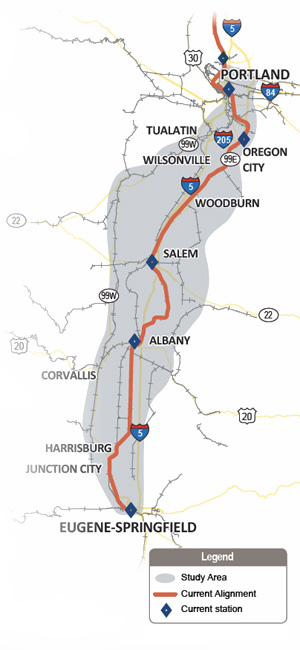
The project team is conducting a National Environmental Policy Act (NEPA) environmental review process, which will make decisions on:
- How frequent and fast rail service should be
- What rail route should be used
- What kinds of technology should be used
- Where stations should be located
- Whether it should be different than what exisits today
Oregon Passenger Rail and NEPA
- Oregon received a federal grant from the Federal Railroad Administration for the Oregon Passenger Rail study, which means the project will follow the NEPA process.
- NEPA ensures that the agency takes into account the environmental impacts of any project, and requires analysis and reporting of negative and positive impacts of alternatives.
- NEPA ensures that the public (you!) will be involved to help us make informed decisions.
Tier 1 Environmental Impact Statement
- A Tier 1 EIS addresses broad corridor-level issues (rail alignment, service improvements, and communities with stations), and will conclude with a decision on a “Preferred Alternative.”
- Additional environmental studies will be needed before any construction can begin.
Public Comments

Heidi on Sep 23 : There is huge need for a commuter rail line from Portland to Salem. The current Amtrak route is great, just increase the frequency of trains.

Kathi on Sep 22 : I agree about Eugene as the southern terminus, connections to PDX and Eugene airport, frequency of service being a determinant of my usage.

Jodee on Sep 22 : I think a high speed rail system is an absolute must for Oregon. I would use it if getting to location is accessible.

Arlen on Sep 20 : I keep wondering if the high speed corridor shouldn't end at either Salem or Portland....I wonder about the passenger loadings south of Salem.

Ariana on Sep 20 : NEPA should be easy to achieve using existing rails, plus taking cars off the road = good for plants & animals.

Rob on Sep 19 : I think Oregon will benefit rail transportation for the future sakes.There should be no way of saying no to it.

Kate on Sep 19 : It would be great to have commuter rail from Portland to Salem! Right now there are many vanpools, carpools & solo drivers making this trip!

Diana on Sep 18 : Higher Frequencies in the morning and evening hours (i.e. 6-9am and 4-7pm)
As a model, also look at the Philadelphia and New Jersey systems.

Lynda on Sep 18 : Please consider a flag stop in Oakridge. Both locals and recreational tourists would be delighted with this connection to other destinations.

Alisa on Sep 18 : How will the current Railroad Stations & trains remodel for Disability Act wheelchairs, crutches, deaf, blind, evelate design safety crossings

Alisa on Sep 18 : From mistakes of TriMet costs not using existing rail lines will their current light rail be included as part of the corridor connection.

Alisa on Sep 18 : How will you use the current freight and passenger railroad tracks into this project not lay new track impacting the environment designs.

Alisa on Sep 18 : Why aren't these funds being used on Disability Act policy freight & passenger trains designs & crossings to meet "Quiet Zone" FTA applications

Alisa on Sep 18 : when is noise & air pollution environmental impacts on multifreights metal to metal, engines & horns being addressed prior to this project.

Ky on Sep 17 : Affordability! Discounts! Airport link. Offer easy info map, brochures, website, smart phone app, & displays w/ better design.

Marilyn on Sep 17 : Service should be more frequent, no buses used, and should be connected to both the Eugene airport and PDX.Electric would be better than diesel.

Sally on Sep 14 : I agree that this PDX to Eugene train is a wonderful idea. For me, frequency of service is what will attract me or discourage me from using it.

jane on Sep 14 : Absolutely need to connect easily to PDX. We currently have to drive from Albany, pay to park, etc. The train would be a much better option

Brian on Sep 12 : I think that any rail project should also have a commuter option for the thousands of drivers who make the drive from PDX metro to Salem

Ross on Sep 11 : I think it needs to end at PDX there are a lot of people that rent cars one way to fly in and out of PDX right now that would use highspeed rail

Erik on Sep 6 : What about potential of bus service - which could serve more communities, more routes, and more frequently than rail - with zero construction?
How will decisions be made?
The board shows how decisions will be made throughout the process. The project also includes several committees that will play an important part in decision-making, including:
- Leadership Council: a core advisory group composed primarily of elected officials from the Willamette Valley. The Leadership Council was established by Governor John Kitzhaber to guide the Oregon Passenger Rail study and develop consensus-based recommendations that will be submitted to the Federal Railroad Administration for final approval.
- Corridor Forum: A group composed of directors and elected representatives from cities and counties and other key agencies and stakeholders. This Forum focuses on broad-level issues, and its input will be provided to the Leadership Council.
- Community Advisory Groups: More geographically based Community Advisory Groups may be formed as necessary to focus on issues and concerns in specific cities and communities. These groups will provide local stakeholders with an opportunity to help shape alignment options in their specific geographic area..
Project Context
The Purpose and Need Statement is an essential part of the NEPA process. It explains why the project is being proposed and why it is a worthwhile investment of time and money. The Purpose and Need statement will also help provide context and criteria for developing a range of possible alternatives, and eventually the selection of a preferred alternative. Below is the Draft Purpose and Need Statement, which will be refined based on public input.
Purpose
The purpose of this project is to provide more convenient, rapid, and reliable passenger rail service between the Columbia River in the Portland metropolitan area, and the Eugene-Springfield metropolitan area in a manner that will:
- Provide an efficient, safe, and cost-effective alternative to highway, bus, and air travel;
- Protect freight-rail carrying capability;
- Support the implementation of regional high speed rail in the Pacific Northwest Rail Corridor between the Eugene-Springfield metropolitan area and Vancouver, British Columbia;
- Promote planned economic development;
- Be sensitive to community and environmental impacts; and
- Integrate with local roadway, transit, bicycle, and pedestrian transportation networks.
Need
Multiple transportation, land use, socio-economic, and environmental considerations drive the need for this
project, including:
- Increasing intercity and regional travel demands;
- Limited rail system capacity and competing service needs;
- Declining state and local roadway funding;
- Congestion’s effects on the economic viability of the corridor;
- Promoting transportation system safety and security; and
- Changing transportation demographics.
Public Comments

Philip on Sep 23 : Efficiency and minimizing negative environmental impacts are most important to me.

Jane on Sep 23 : I support passenger commuter rail service from PDX to EUG It should be cost/time-effective and should serve workers, students, and tourists.

Susan on Sep 23 : My mom travels once a week from Albany to Oregon City. We would continue to support a stop in Oregon City. It is so convient for us.

Kathi on Sep 22 : I agree that dedicated tracks OR dedicated time on existing tracks is essential. Also agree onstops in Salem, Corvallis, and Albany, too.

Rachel on Sep 21 : PDX->Salem->Corvallis->Eugene is THE corridor. So many people commute for work and play. Having this route would be huge.

Ariana on Sep 20 : Reliability is key, and getting the train on its own nonshared track would help it not be late so much of the time. Amtrak is notoriously late.

Tyler on Sep 20 : Electric trains should be considered. They are clean, quiet & support Oregon's efforts towards sustainability.

Meredith on Sep 19 : Need to make this happen. We need safe reliable service from Eugene to Ptld. We cannot rely on the private sector to do this Sooner is better

Meredith on Sep 19 : We need a dedicated intercity passenger line. Make it so intercity commuters can get to work by 8 and home at a decent hour and we'll all ride.

Harry on Sep 19 : I agree, it would be great to have Corvallis be a connecting city. We have rail lines all over the state so should work on statewide connections

Dorothy on Sep 19 : Another voice for true high-speed rail. When investing in new infrastructure—necessary for a dedicated passenger line—make it count.

Lisa on Sep 18 : I travel to Salem every other week from Portland. Would love to take the train, but there are none available in the morning.

Bryan on Sep 18 : Need to get passenger trains off of privately-owned freight rail tracks to improve passenger rail service. This is much needed.

Susan on Sep 17 : We need more efficient transportation options in Oregon and this project will be huge step forward.

Lois on Sep 17 : Economy. Has to be affordable for family, groups. Needs to be on time. Easy PDX Airport connection. Communication of each city's transit system

Vicky on Sep 16 : On-time travel is important for connections to other trains or to PDX. Dedicated tracks for passenger trains would promote higher usage.

Carol on Sep 16 : I would support a line that continues to stop in Oregon City. We have already been making use of that stop. It would boost OC, Gladstone, WL.

Eric on Sep 15 : this purpose and need state meet our expectations.
Please include corvallis as a part of the connective cities. Also direct service to PDX.

TAM on Sep 14 : The environmental degradation caused by cars should also be foregrounded... along with accidents and wild animal deaths

jane on Sep 14 : The trains need to provide more options for commuting. Currently they supplement the schedule with buses that are late more than on time.

PL on Sep 14 : I agree a faster, less expensive rail system would benefit the residents of the Willamette valley.

Delores on Sep 13 : I agree that the system must be efficient, safe and cost effective. But to whom? Those who will use it most often must provide input.

Karl on Sep 13 : Incremental improvements in speed and service are the right approach for Oregon. European (very high speed) rail is costly and unnecessary her

Karl on Sep 13 : If stations continue to be located in the city centers, there is an additional purpose/need: furthering the goals of compact urban dev't.

Brian on Sep 12 : I agree with this need statement. I used to make trips to PDX by train but switched back to my car because the train was frequently late.

Chelsea on Sep 11 : Love the train. Would like them to run later at night. Also would be nice to have direct service to PDX airport.

Dorene on Sep 10 : Convenient and rapid rail passenger service would be a huge benefit in the Willamette valley corridor

JD on Sep 9 : Please build true high speed rail, and not waste money on "higher speed" rail which will be outdated and inefficient the day it opens.

Max on Sep 7 : Unlike busses or cars, rail travel is comfortable and easy. But for more than 1 traveller (e.g. family), it's cheaper and still fast to drive.

Esther on Sep 7 : designated passenger track not shared with freight would be preferable
rail is efficient & environmentally sound use of land & energy

Greg on Sep 7 : Is there data driving commuter v. event (UO/OSU athletic events) traffic? Who are the intended passengers & rider frequency?

Linda on Sep 7 : I lived & worked in Germany for three years & used rail for local & regional purposes...we need this option here for business & pleasure trips!

Gerry on Sep 7 : There should be a definitive cost/benefit analysis of what is to be gained from this project.

Erik on Sep 6 : The "need" is not for "rail" - the "need" is for intercity pass. transportation. This process assumes "rail" is the "need" and is thus flawed.
What impacts will be considered?
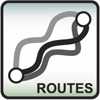 | Rail routes (alignments), including:
- Oregon Electric Railroad corridor (west of I-5) |
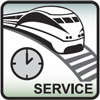 | Service improvements
|
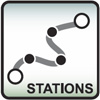 | Communities where stations will be located |
Review the maps below to explore what we already know about the study area.
Existing facilities and new ideas are represented on the map below using clickable shapes, lines and icons. Click the map elements to read more information. To simplify the map, you can turn groups of icons on and off using the "Show Only" controls at the bottom-right of the screen. If something you want to click is underneath another layer, turning it on and off again will bring it to the top. Click "Reset Map" to re-center the map and make all layers visible.
The map is currently closed to new comments, but you are always welcome to submit feedback using our regular comment form.
Map Legend | Study Area Boundary | Priority Wetlands | Current Alignment (Amtrak) | Existing Rail Facilities | Interstate 5 | Existing Station |
General Idea | Potential Problem | Possible Station | Possible Route | Environmental Concern | Cultural or Historic Resource | Question |
The fine print: Include your email address if your comment includes a question for the project team. Your first name will be published along with your comment, your email address will not be published. By leaving a comment, you are agreeing to our comment policy. Having a problem with the map or comment form? Send a message to technical support.
Want more information? Use ArcGIS online to see even more details about the project area. (Tip: zoom in to the ArcGIS map for more detail, click the map features to read descriptions.)
How will alternatives be narrowed?
Alternatives will be narrowed to identify the best possible alternatives to be evaluated in the EIS. This will be done in two ways:
Screening
The broad range of alternatives gathered during the scoping phase will be screened against the Purpose and Need.
Evaluation
Alternatives that "pass" the screening process will be evaluated using specific criteria being developed from the study’s Goals and Objectives. The Goals and Objectives will be developed based on public input received during this scoping phase.
The narrowed list of alternatives will be further analyzed in the EIS.
Public Comments

Kathi on Sep 22 : Weight passenger rail needs equally with freight--both are essential to usefulness and viability.

ariana on Sep 20 : Commuters should be the focus of this train segment. Amtrak is cost-prohibitive in this corridor.

Eric on Sep 15 : provide weekly access to college student rail between metro areas and college campuses

Jane on Sep 14 : Criteria shoud be weighted to maximizing ridership. Commuters are currently treated like second class citizens. They need options and respect.

Heidi on Sep 11 : Highly support a high-speed commuter train. It must be cost-effective for work commuters and have route times that support business commutes.

Greg on Sep 7 : Maximizing ridership needs to be a goal. That could compromize route and/or # of stations/stops.

Gerry on Sep 7 : The alternatives MUST also be evaluated against cost/benefit. To not do so is to risk "wasting" the money.
Next Steps
Comment
- Submit a comment form (Comments must be received by Oct. 31 to be considered during the scoping phase)
- Visit www.OregonPassengerRail.org to provide comments anytime, and continue to participate in this online open house (through Sept. 23)
- Email: info@oregonpassengerrail.org
- Contact ODOT
c/o Jyll Smith, ODOT Public Information Officer at
(503) 986-3985 or ODOT Major Projects Branch,
3210 Del Webb Ave NE, Ste 110, Salem, OR 97301
Stay Informed
- Sign up for our mailing list through the project website
- Attend future public outreach events


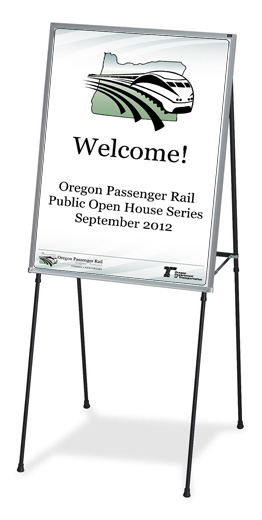
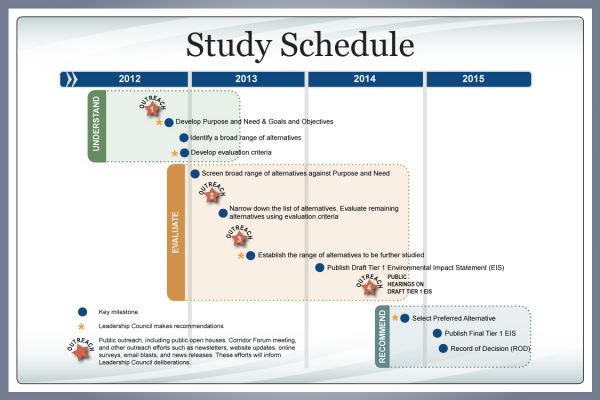


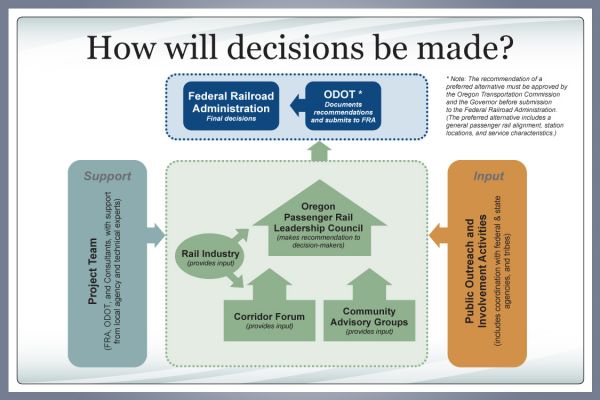
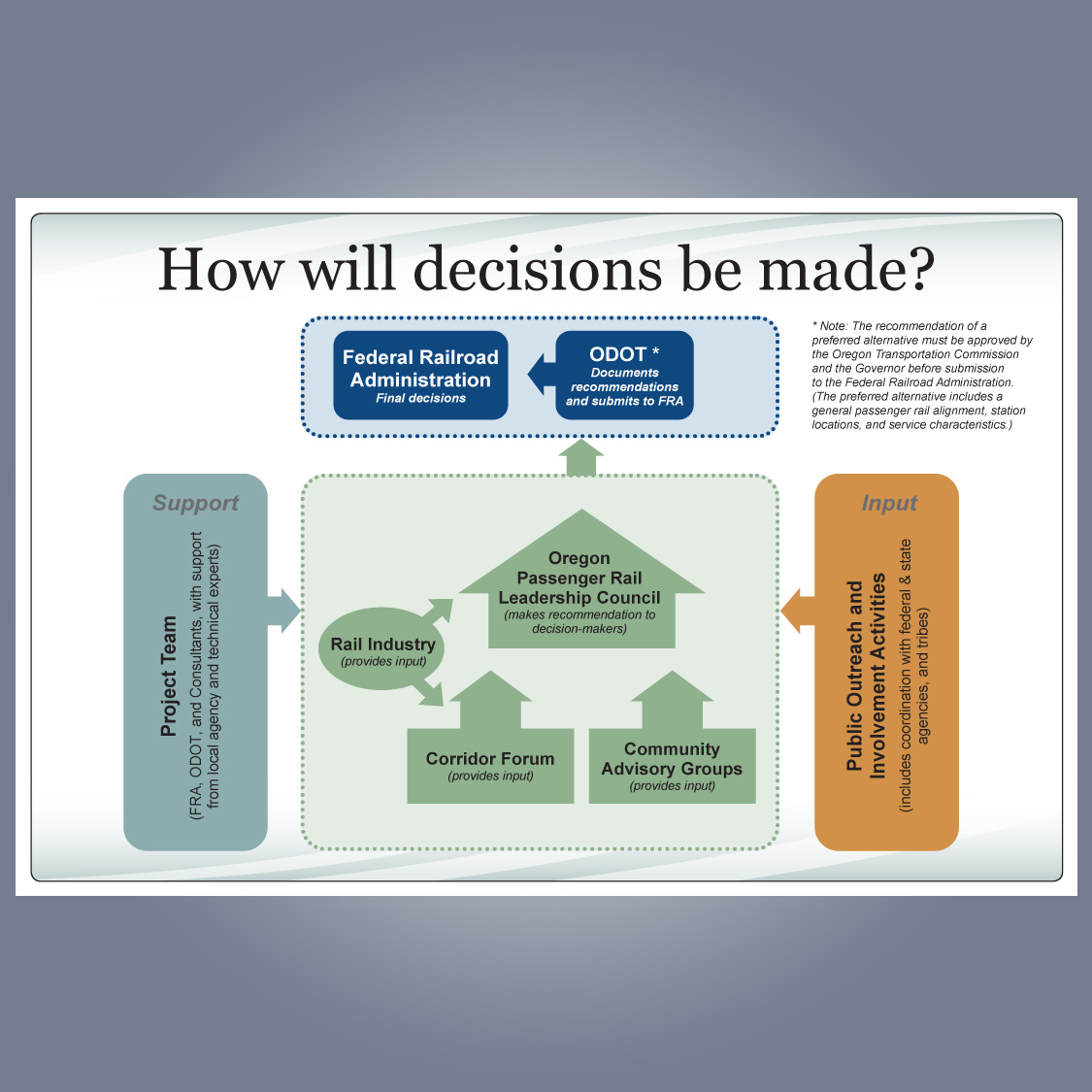
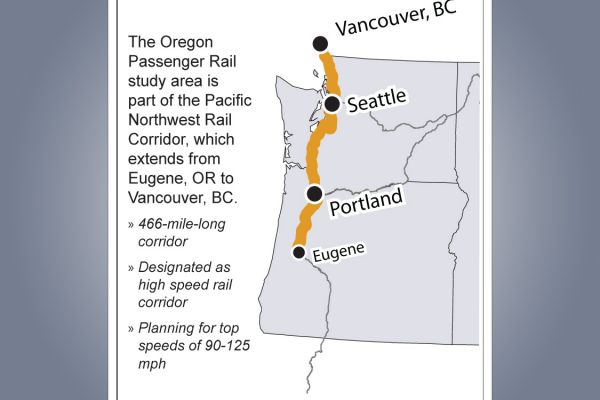
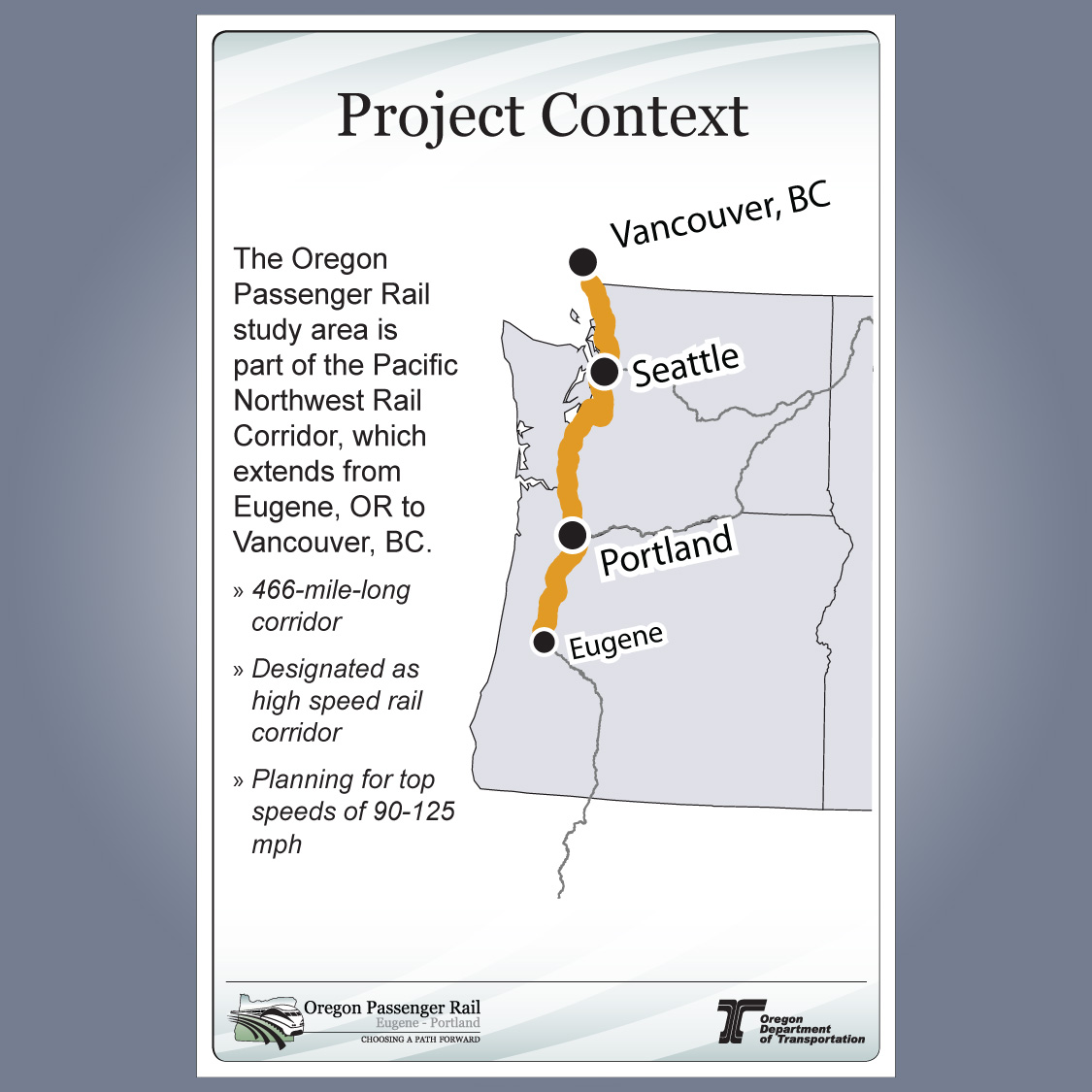













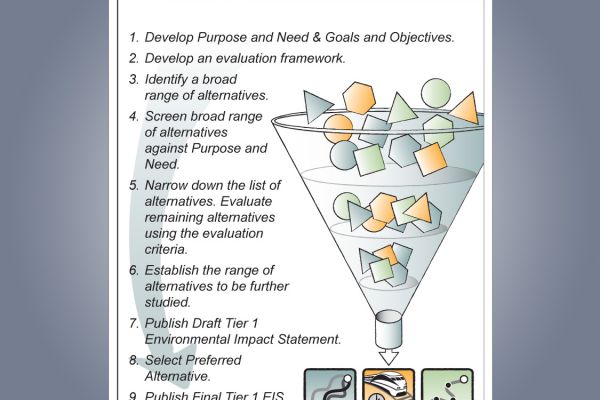
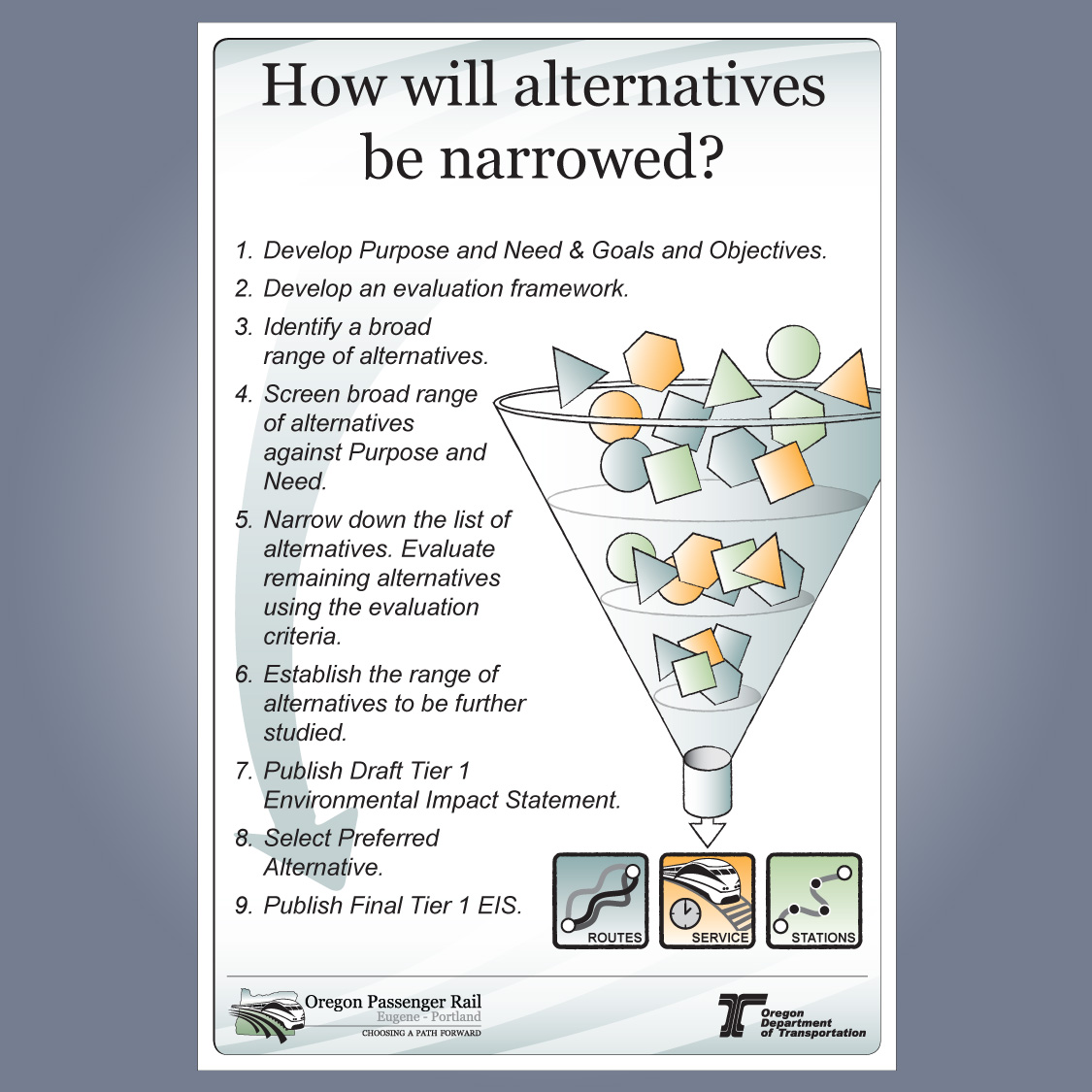
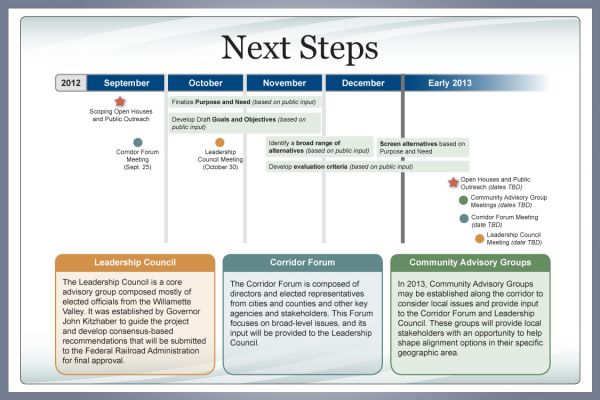
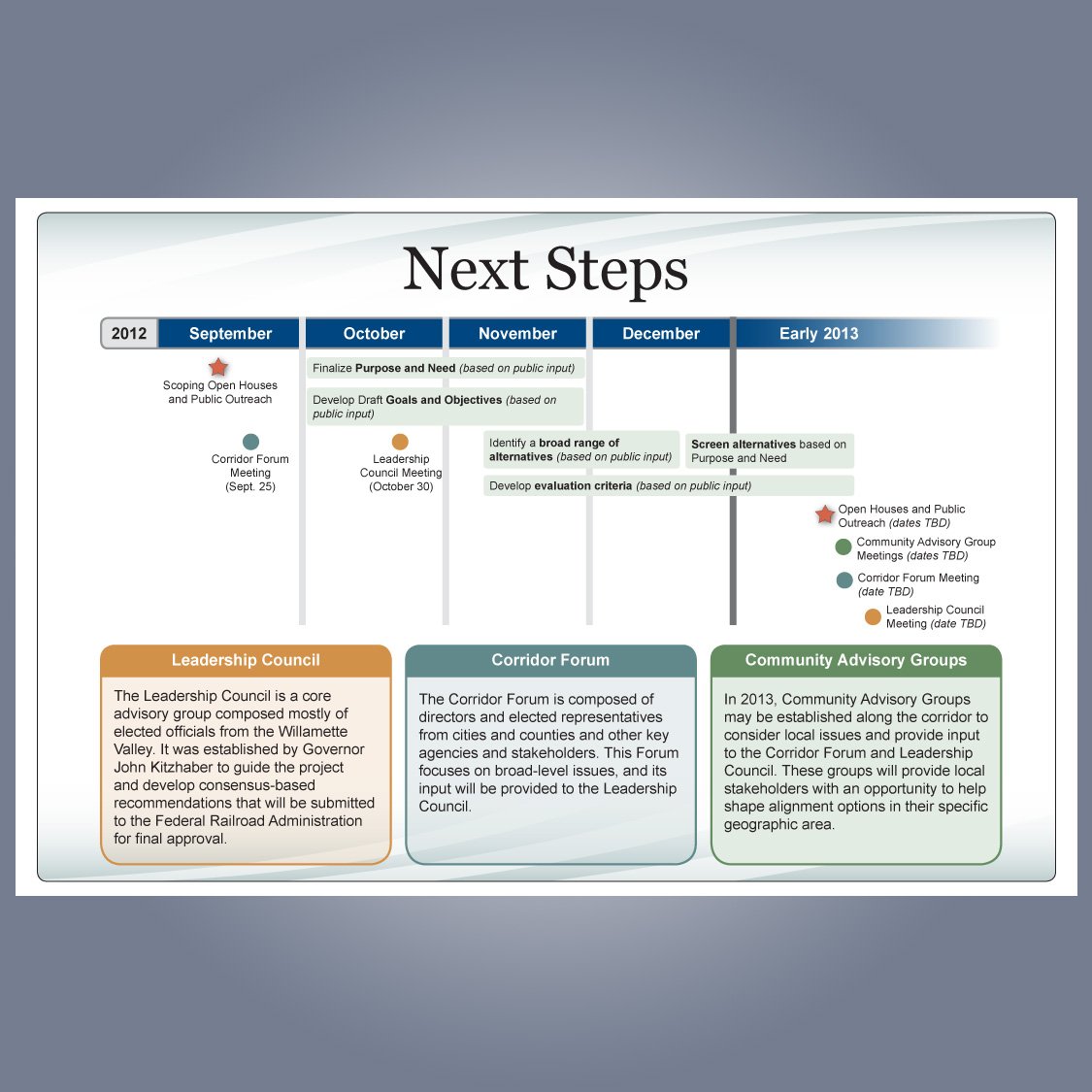

Philip on Sep 23 : High speed rail should def go from Eug- VancouverBC. Rail needs subsidies just like hwys and airports.